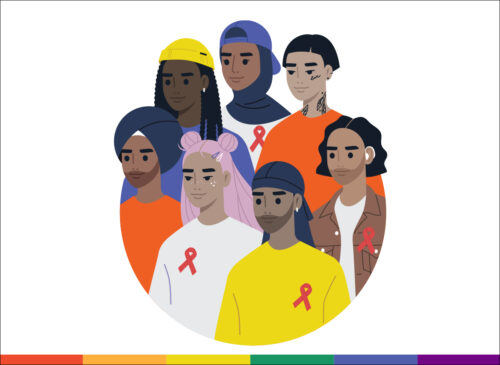
THE CANADIAN PRESS/Cole Burston
Among the issues for Ontario secondary public school teachers who walked off the job for a one-day strike on Dec. 4 is quality of learning for students, including class sizes and mandatory online learning.
For months Ontario families have been on tenterhooks about looming school strikes after the Doug Ford government announced both education funding cuts and larger class sizes — as well as a requirement that would force high school students to take four online courses beginning in the 2020-21 school year.
The government partially backtracked in November and said that instead of four online courses only two will be required, and that some students could be exempted on an individual basis.
The mandatory online learning announcement last spring sparked many questions and concerns, and changing the number of online courses required still does not address these.
Significant obstacles
Beyhan Farhadi, whose PhD dissertation in geography at University of Toronto examined online learning in the Toronto District School Board, said mandatory online learning is no substitute for the classroom and will devastate the many students who struggle face to face.
An Ontario ministry spokesperson said this past spring, “school boards will also provide accommodations for students with special education needs, as required, to access the curriculum.” But with no details on how this will happen, particularly in schools that have lost staff due to cuts, not to mention cuts to funding for specialized programs, the province has yet to instil confidence that students with special needs have been considered in the online learning requirement.

(Shutterstock)
The Ministry of Education defines students with special education needs as including “all those … who are receiving special education programs and services” to meet exceptional learning needs. These include five categories defined by the Education Act: behavioural, communicative (such as autism spectrum disorders, hearing loss or learning disabilities), intellectual (such as giftedness or developmental disability), physical (such as low vision) and multiple exceptionalities.
As a researcher who has studied accessibility for students with hearing loss, and post secondary accommodations for students with hearing loss, I am concerned that mandatory online learning could create significant obstacles for students with disabilities.
All high school students should be able to take advantage of online learning. But requiring online credits has the potential to place a high hurdle between some students and graduation.
Potential barriers
Online learning is increasingly popular; it offers flexibility that is not always available for face-to-face courses. However, taking a course online is not the same as taking a course in person.
Research suggests that four skills are required for successful online learning: reading and writing, independent learning, motivation and computer literacy. Many students with special needs struggle with one or more of these. For example, students with learning disabilities who have difficulty with writing may struggle in an online learning course where they are required to communicate exclusively in writing.
Teachers in a regular classroom can spot struggling or disengaged students. A confused student can ask the teacher or a classmate, or obtain additional help at lunch or before school. None of these are available in the same way in online learning.
The burden is on the student to contact the teacher for help. Students with special needs who do not have excellent self-advocacy skills or who are not already confident in navigating their educational challenges or exceptionalities will be at significant risk of quietly falling through the cracks.
In addition, students with special needs may already be at risk for bullying. When everyone in the class is online, could this increase social isolation and create more opportunities for online bullying?
Extra time, thought, money
What is good practice for online learning may actually create barriers for students with special needs. Consider an often-recommended strategy, having the instructor create a short narrated PowerPoint or video lesson.
This is easy enough to do with today’s technology — turn on your laptop, pull up a PowerPoint, press record and talk for 10 minutes. This could be a nice strategy to complement the textbook and personalize the course.
However, what about a student who is deaf or hard of hearing who needs this video captioned or interpreted into sign language? Captioning requires technology and skills that few teachers have.
What about a student who is blind or has low vision who cannot access the text because text-to-speech screen readers do not work with video, or the student with an anxiety disorder who, unable to play the PowerPoint because of technical issues, and feels further stress and anxiety?
What about the student with ADHD who has difficulty maintaining focus or processing information or the student with a sports-related concussion who is required to limit screen time?
These are not insurmountable problems, but do take extra thought, time and, often, money.

(Shutterstock)
Increased time, inadequate training
In their 2018 survey of online learning in post-secondary education, the Canadian Digital Learning Research Association reported the main barriers to teaching adult learners online were increased time required by instructors, and inadequate instructor training and support.
There’s no reason to date to think that Ontario has a plan, or has allocated resources, for added demands of teaching online learning. Will staff teaching online courses be provided with extra training and professional development to ensure the online course meets all students’ needs?
Accommodations or supports that are listed on a student’s Individual Education Plan may not work online, or may be difficult to implement. For example, captioning requires skills and resources that the teacher is unlikely to have. Some current accommodations that a student may have, like preferential seating, are not relevant in an online course.
In high schools, a designated Learning Resource Teacher (LRT) provides support for students with special needs. Will this teacher be responsible for online accommodations as well, and, if so, what training and support will they have? How many of these high school specialists will be among those potentially affected by layoff notices, like staff working with students with special needs in the Stratford area?
Ontarians need to feel confident that if high school students will be required to pass online learning courses, everyone has a level playing field. Right now, students with special needs, their families and their teachers have a lot of questions and no real answers.
[ Expertise in your inbox. Sign up for The Conversation’s newsletter and get a digest of academic takes on today’s news, every day. ]Pam Millett, Associate professor, Faculty of Education, York University, Canada
This article is republished from The Conversation under a Creative Commons license. Read the original article.










